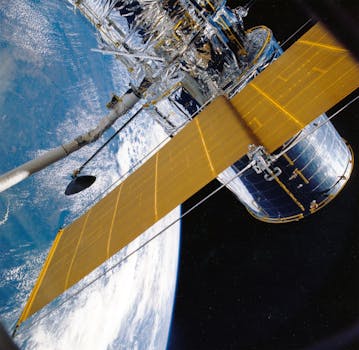
The Rise of Mega-Constellations: Latest Updates in Satellite Telecommunications
The rise of mega-constellations is revolutionizing the field of satellite telecommunications, with thousands of small satellites being launched into low Earth orbit to provide global internet coverage. Mega-constellations are clusters of satellites that work together to provide a network of communication services, including internet access, voice communications, and data transmission. The focus keyword, Mega-Constellations, is a key term in understanding this emerging technology.
Introduction to Mega-Constellations
Mega-constellations are designed to provide a new level of connectivity and communication services, particularly in areas where traditional fiber-optic cables and cell towers are not available. These satellites are typically smaller and less expensive than traditional satellites, making them more accessible to a wider range of companies and organizations. The use of mega-constellations is expected to increase significantly in the coming years, with companies such as SpaceX, Amazon, and OneWeb leading the charge.
How Mega-Constellations Work
Mega-constellations work by using a network of satellites to provide a continuous stream of data and communication services. Each satellite in the constellation is connected to others, creating a web of communication that can be used to transmit data and voice communications. The satellites use advanced technology, such as phased arrays and beamforming, to direct signals to specific locations on Earth. This allows for high-speed data transmission and voice communications, even in areas with limited or no traditional infrastructure.
The development of mega-constellations is driven by advances in technology, including the use of smaller and more efficient satellites, as well as improvements in launch technology. The cost of launching satellites into space has decreased significantly in recent years, making it more feasible for companies to launch large constellations of satellites. Additionally, the development of new technologies, such as reusable rockets, has made it possible to launch satellites into space more frequently and at a lower cost.
Benefits and Challenges of Mega-Constellations
The rise of mega-constellations has several benefits, including the provision of global internet coverage, improved communication services, and increased access to remote and underserved areas. Mega-constellations can also provide a new level of redundancy and resilience in communication networks, as the loss of one satellite can be quickly compensated for by others in the constellation.
However, the development of mega-constellations also poses several challenges, including the risk of space debris, interference with other satellites and astronomical observations, and the potential for unequal access to communication services. The launch of thousands of satellites into space also raises concerns about the environmental impact of the space industry and the need for sustainable practices.
Despite these challenges, the rise of mega-constellations is expected to continue, with many companies and organizations investing heavily in the development of satellite telecommunications. The use of mega-constellations is expected to increase significantly in the coming years, with applications in areas such as remote sensing, navigation, and communication services.
Conclusion
In conclusion, the rise of mega-constellations is a significant development in the field of satellite telecommunications, with the potential to provide global internet coverage and improved communication services. While there are challenges and concerns associated with the development of mega-constellations, the benefits of this technology are expected to have a major impact on the way we communicate and access information.



